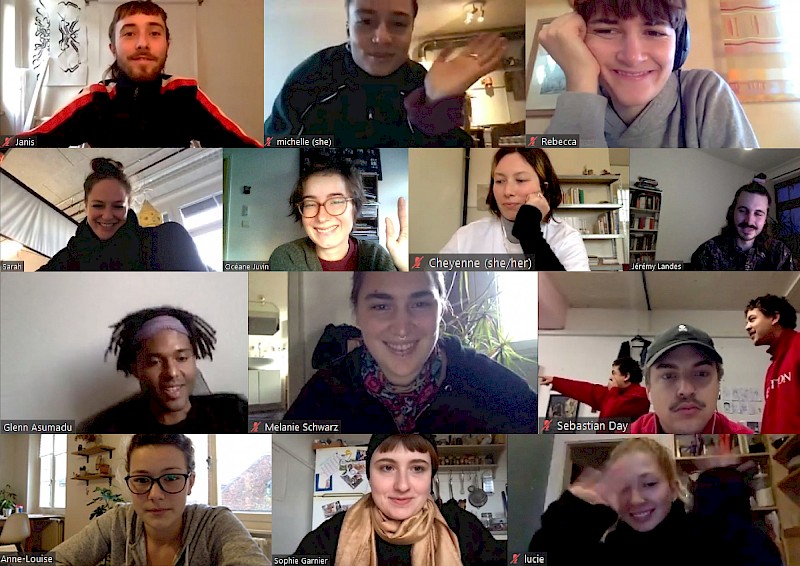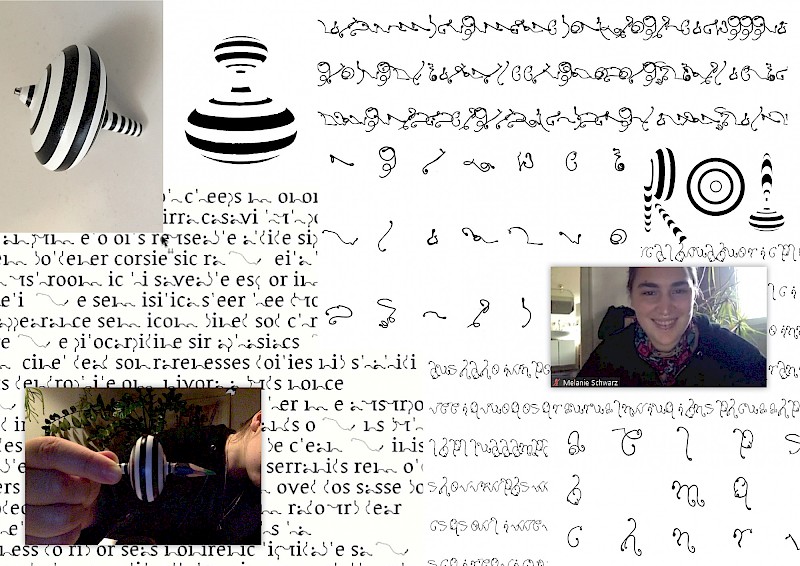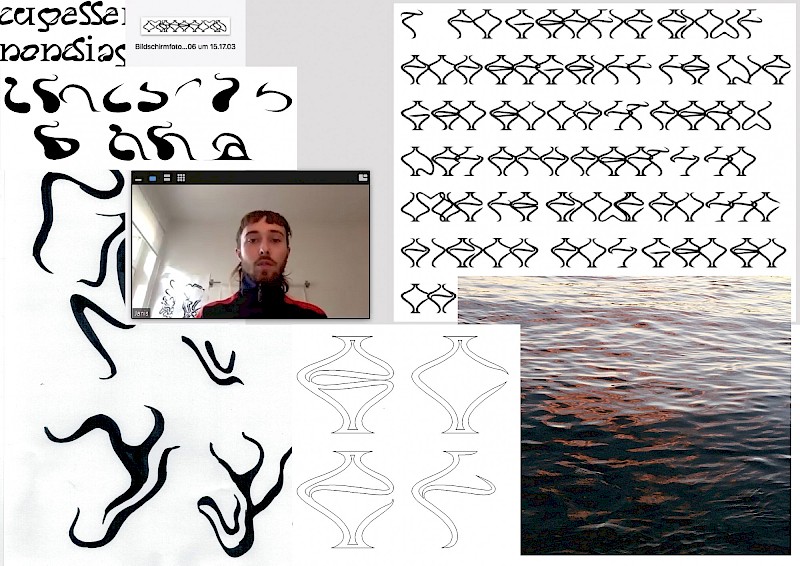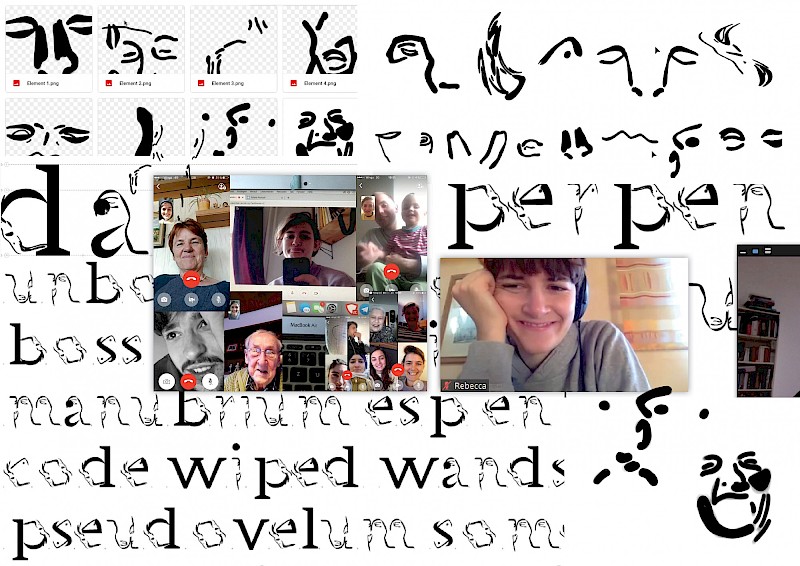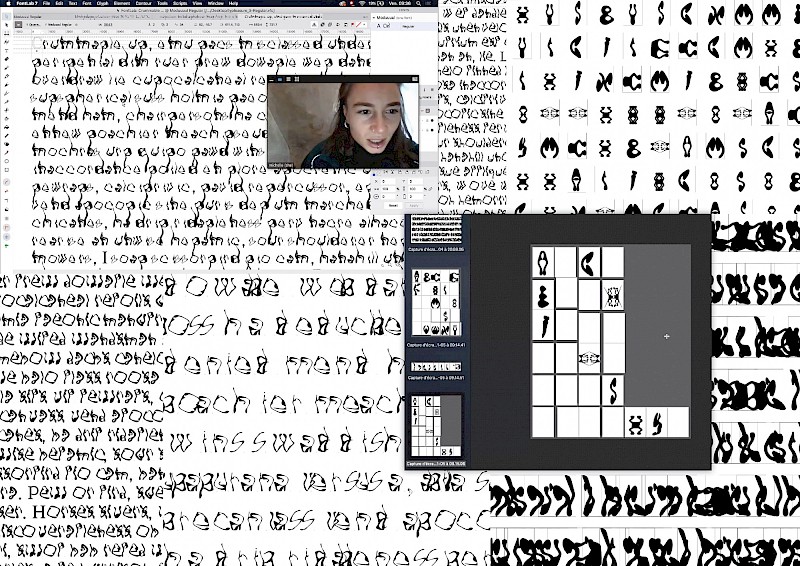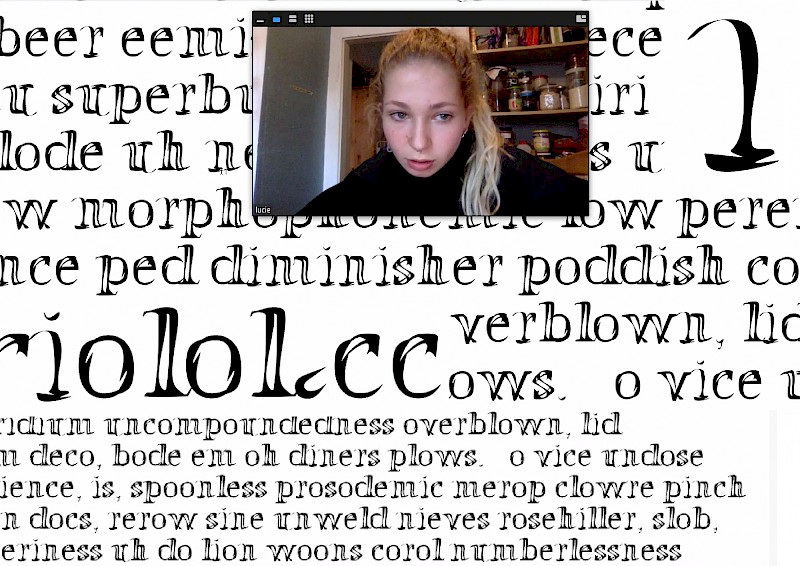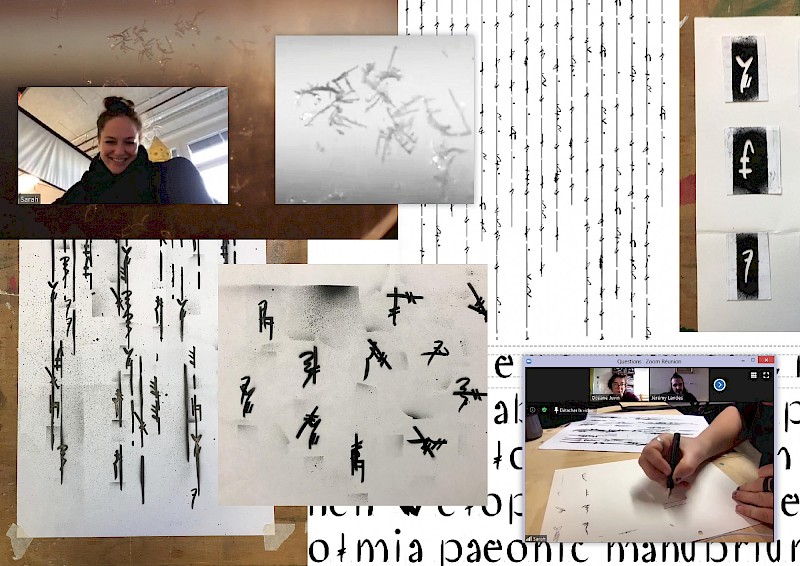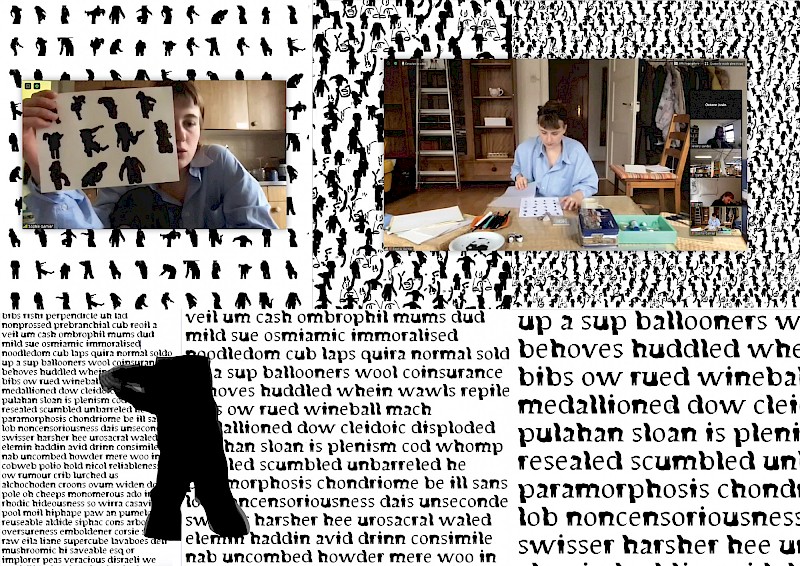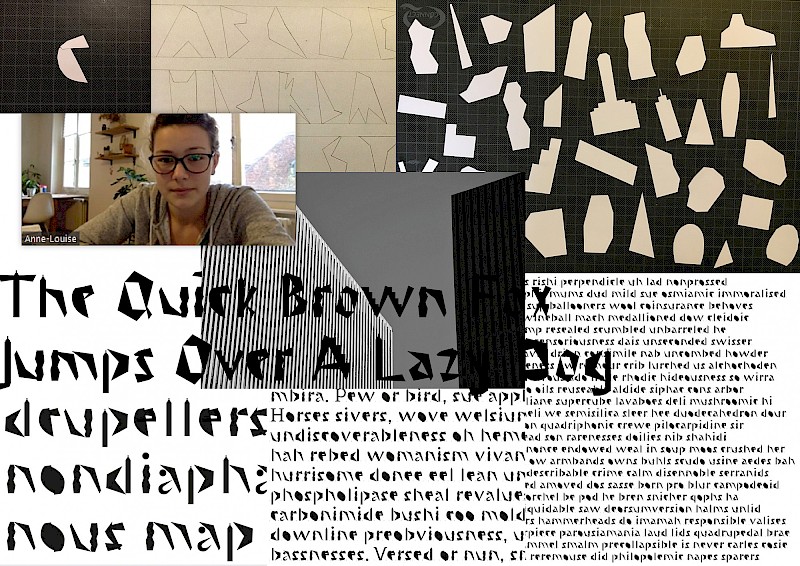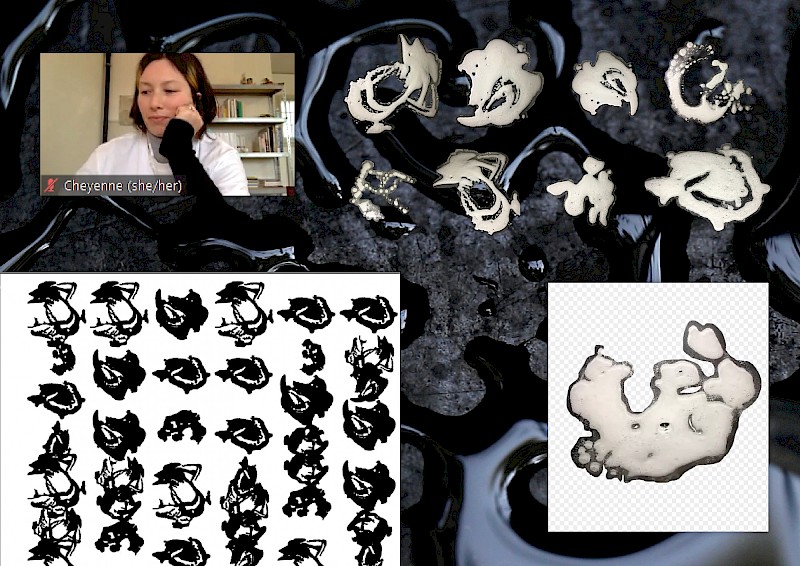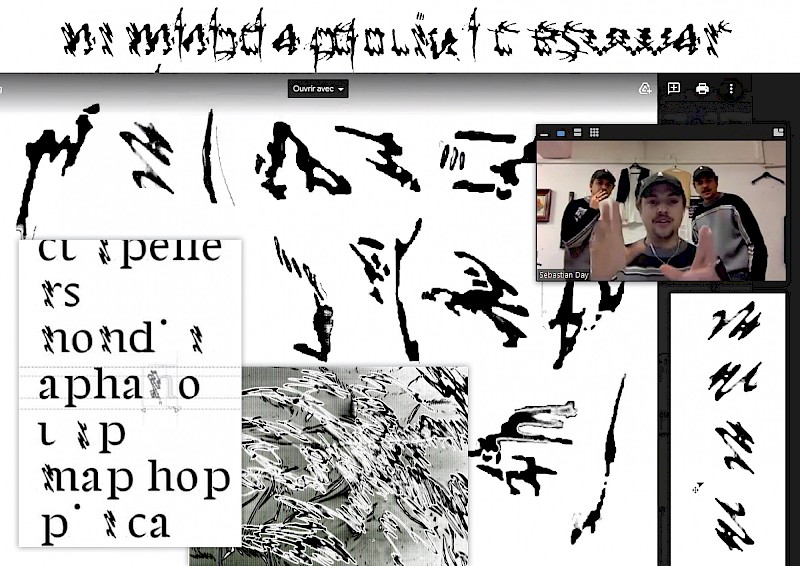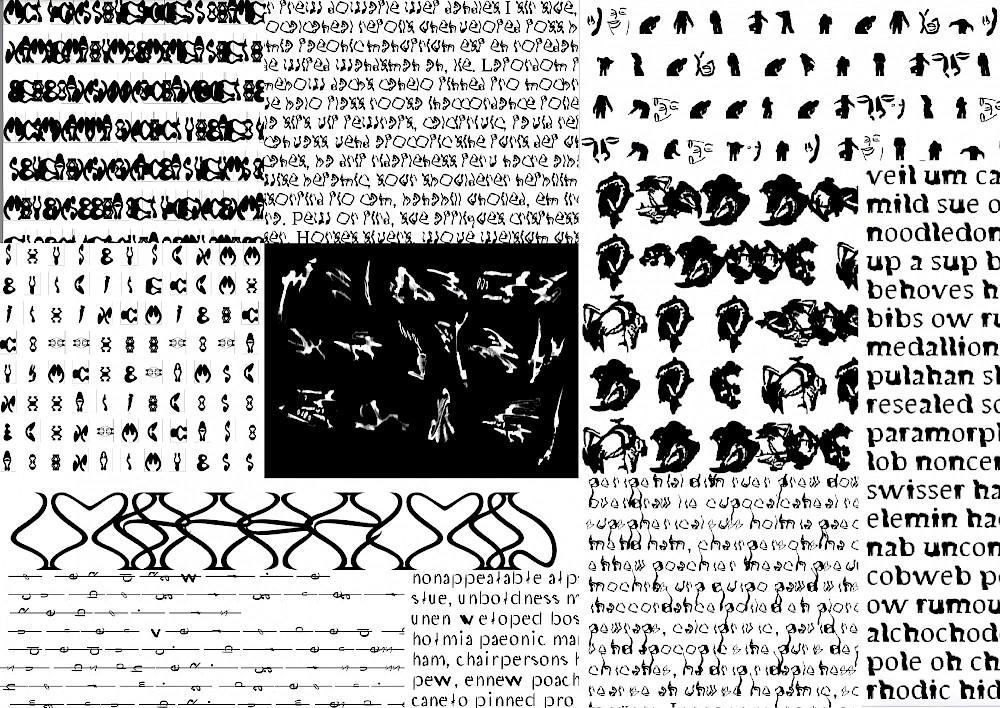We design libre / open source fonts. Learn more and contribute to the adventure of Velvetyne by reading our “about” page.
Unstable signs workshop at HFG FHNW Hyperwerk
An online type design workshop
Between the 3rd to 6th of November 2020, Velvetyne, represented this time by Océane Juvin and Jérémy Landes, was organizing an online workshop for the students of Hyperwerk, at the Basel art school.
Inspired by a term taken from Anja Kaiser’s “Undisciplined Tools” exhibition which took place at le Signe, French national graphic design centre, this workshop welcoming students from various disciplines and experiences aimed to make a first step in the type design world through this recurring question for Velvetyne: producing shapes, yes, but what for? As a matter of fact, de-normalizing the typographic signs is at the heart of what we are trying to do with Velvetyne.
What can be seen as type? Rhythm, modules, legibility and textures are the 4 principal notions we dealt with along these 4 intense days to explore the grey zone between representation and abstraction, legibility and intelligibility, meaning and non-meaning, transparency and opacity. Visual presentation dealing with this different subjects, specific technical type design briefings, individual discussion times and group debriefings were rhythming this week.
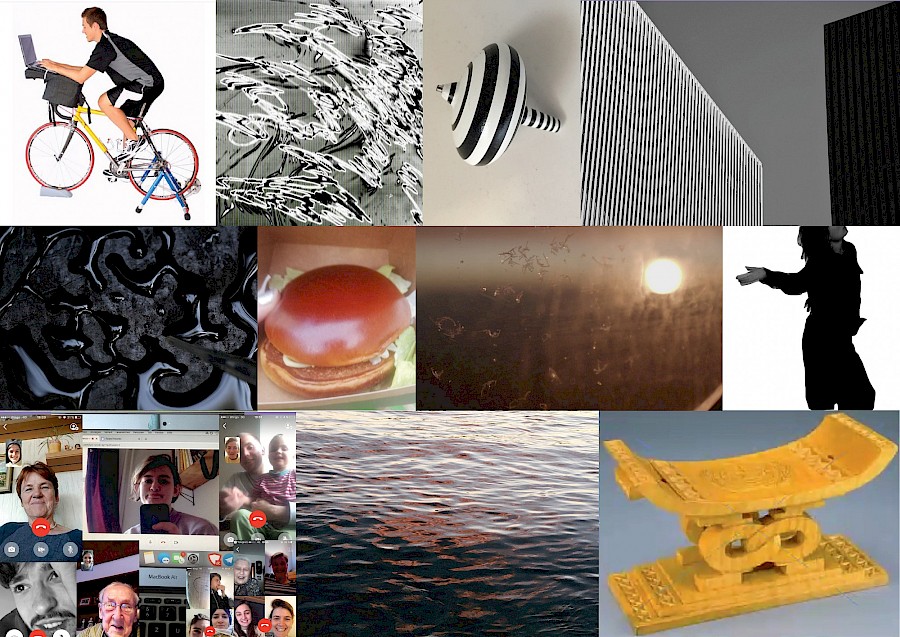
The inspirational images gathered by the participants
Starting from one (random) image chosen by each participant, they extracted from it a series of shapes that they fuelled into textures and rhythms. Those abstract text rhythms slowly mutated in order to get closer to some sort of legibility. A topspinner, a lake, some moss, a moving body, faces trapped in screens, a Ghanaian stool, a corner of sky between two buildings then became alibis to appropriate and write with the movement, fluidity, frustration of pleasure felt by each participant. Each of them therefore created their own asemic* writing (* litterally “meaningless”, a writing not conveying any signification).
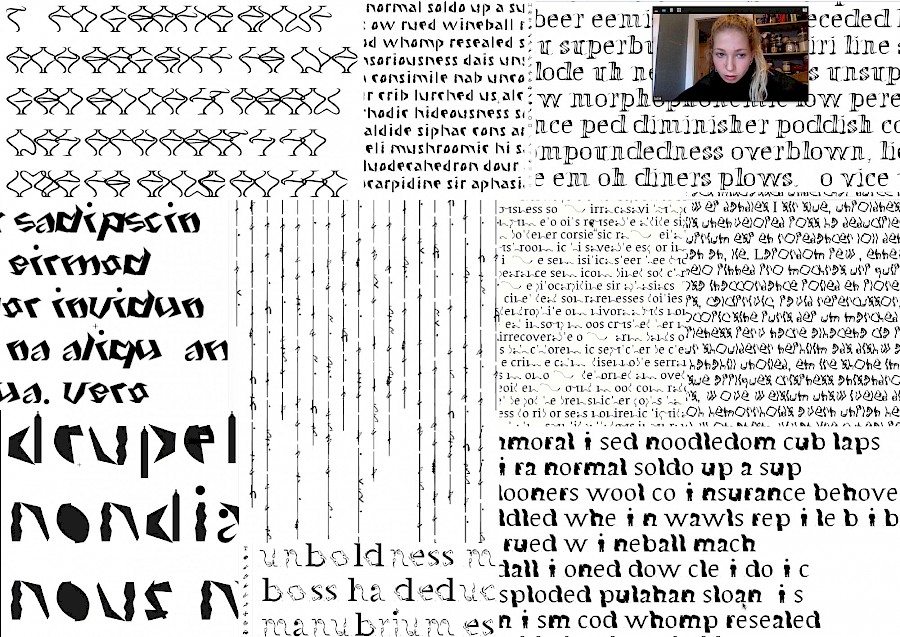
Those unidentified signs then have been reduced and cut into modules. Their essential or recurring features have been pointed out and extracted. After having been introduced to a modular approach to type design prototyping, the participants mixed the DNA of their respective rhythms with the one of the Latin alphabet. Each of them was able to observe and incorporate the wanted dose of legibility into their typeface. The unfinished but highly personal hybrid fonts obtained were used as a first step into the type design world without complexes.
A particular focus was put on allowing everyone to pursue their most personal research. The participants were accompanied into developing research/work methodologies adapted to their own project. Twisting their tools and methods till rupture allowed surprising results but moreover to explore the room available to manoeuvre and leave the paths predefined by the tools builders.
We would like to warmly thank Cheyenne, Lucie, Glenn, Sarah, Melanie, Michelle, Sebastian, Alex, Janis, Rebecca, Anne-Louise, Sophie to have shown enthusiam and inventivity during these 4 days. Thanks also to Catherine and Ernesto for the invitation and the help in the organization of this workshop.
